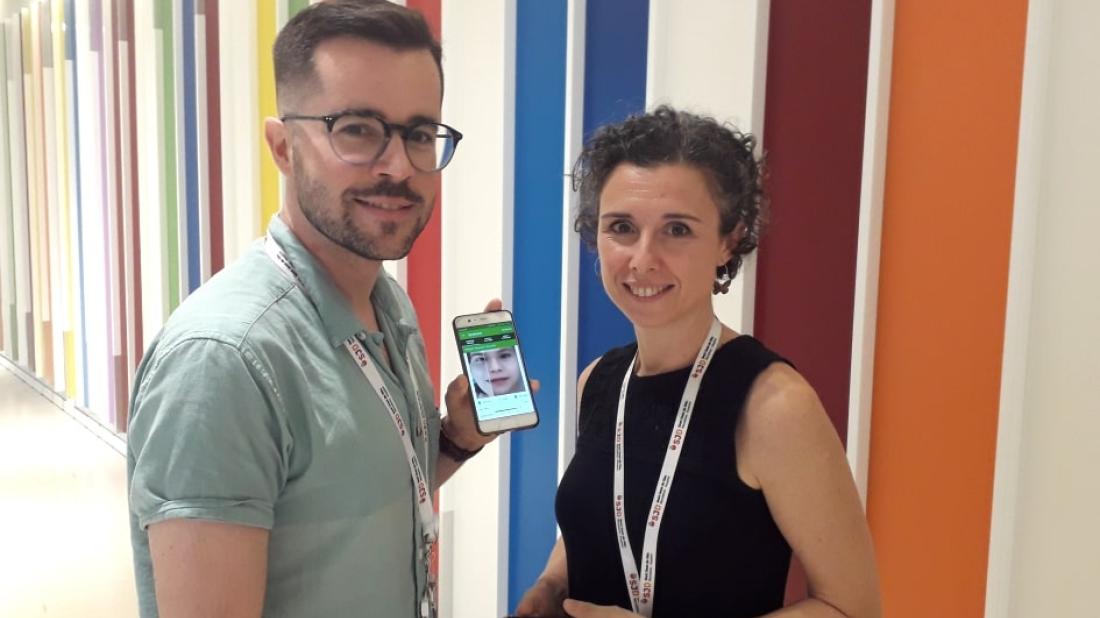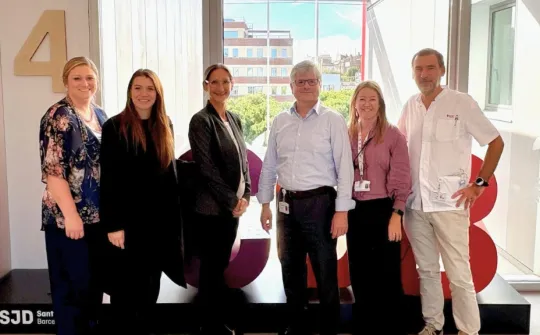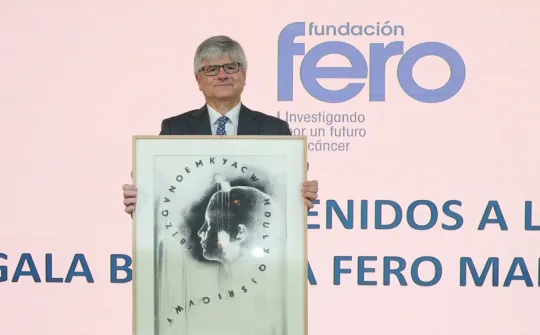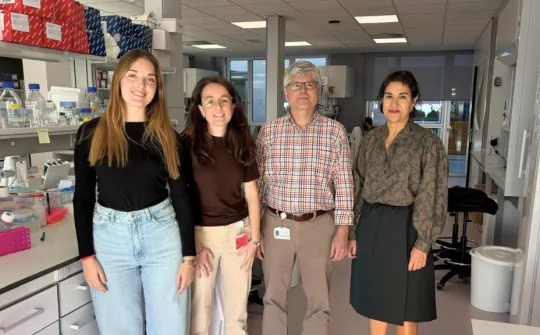Professionals from SJD Barcelona are helping doctors from around the world to diagnose a rare disease

They have analysed the most unique features of children suffering from PMM2-CDG and developed an app that, from a photograph of the patient's face, can suggest a diagnosis.
Face2Gene is a smartphone application that facilitates the difficult task of diagnosing rare or ultra-rare diseases. From the photograph of a patient, the application analyses their facial features and compares them with those registered in their database and, thanks to artificial intelligence, offers a suggested diagnosis.
Two professionals from the Sant Joan de Déu Research Institute have contributed to enhancing the functionality of this application for the diagnosis of PMM2-CDG (phosphomannomutase deficiency).
Given how rare the disease is and how little is known about it, Mercedes Serrano, pediatric neurologist, and Antonio Martínez Monseny, clinical geneticist at the SJD Barcelona Children’s Hospital, have trained facial recognition tools so that doctors from all over the world who are not familiar with this genetic condition can diagnose it.
The doctor only has to contrast a photo of the patient with the anonymous mask that the Face2Gene app has created from the photos of the 31 patients studied to know if he or she presents the phenotype with the characteristic features of PMM2-CDG and, if so, carry out other complementary tests to confirm the diagnosis.
A rare disease with very characteristic facial features
The cause of PMM2-CDG is a congenital metabolic error and it affects about 50 children in Spain. In 30% of cases it is especially serious and can lead to death.
Patients present with cerebellar syndrome in differing degrees, which manifests itself with symptoms similar to alcohol intoxication: they walk in an unstable way, they slur their words, they tremble and cannot control hand or eye movement and their thinking speed is slower.
PMM2-CDG is associated with a recognisable facial pattern, which has meant that the appearance of patients can be described to train facial recognition tools and then include this information in the Face2Gene smartphone application.
Doctors Serrano and Martínez Monseny have led the study to learn about these physical features that are characteristic of PMM2-CDG patients and to identify the facial pattern that allows the prognosis or evolution of the disease to be determined early. To do this they have used a sample of 31 cases from all over Spain, most of them pediatric patients affected by this disease, whose information has been accessed thanks to the networking of their doctors.
The study has allowed us to identify some typical features of children with PMM2-CDG: ascending eyelid fissures, strabismus, lipodystrophy, inverted nipples, long philtrum, large mouth, long fingers and joint hyperlaxity.
In addition, they have concluded that patients who already present with lipodystrophy and inverted nipples during the first months of life will develop a more serious level of the disease.
This information on the prognosis of the disease is not currently offered by genetic diagnosis, since there is no relationship between the type of mutations and the degree to which the patient is affected.
The study has been published recently in the Journal of Medical Genetics (IF 5,751)



